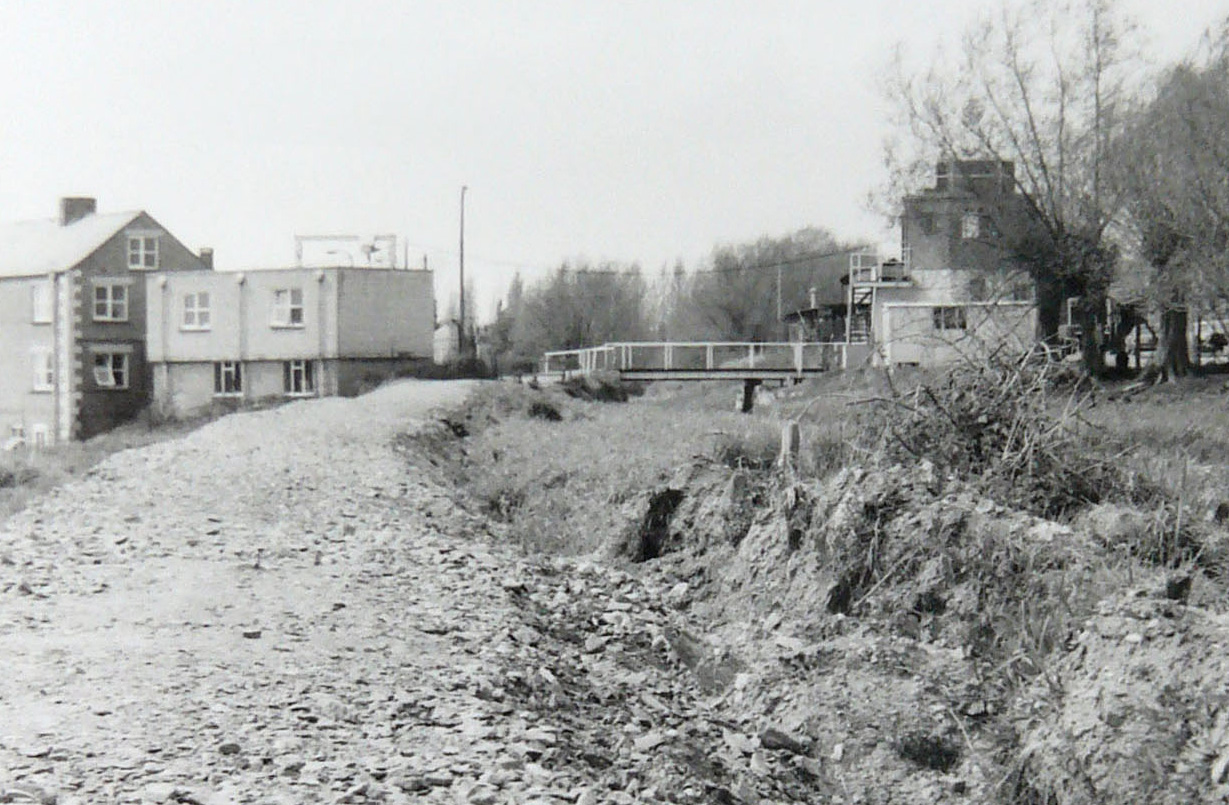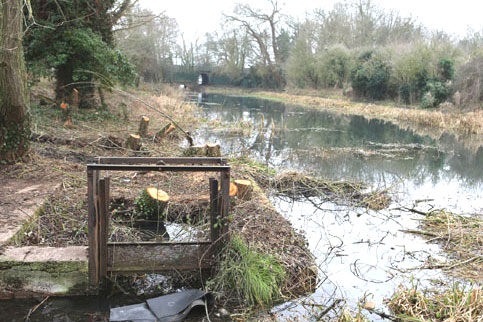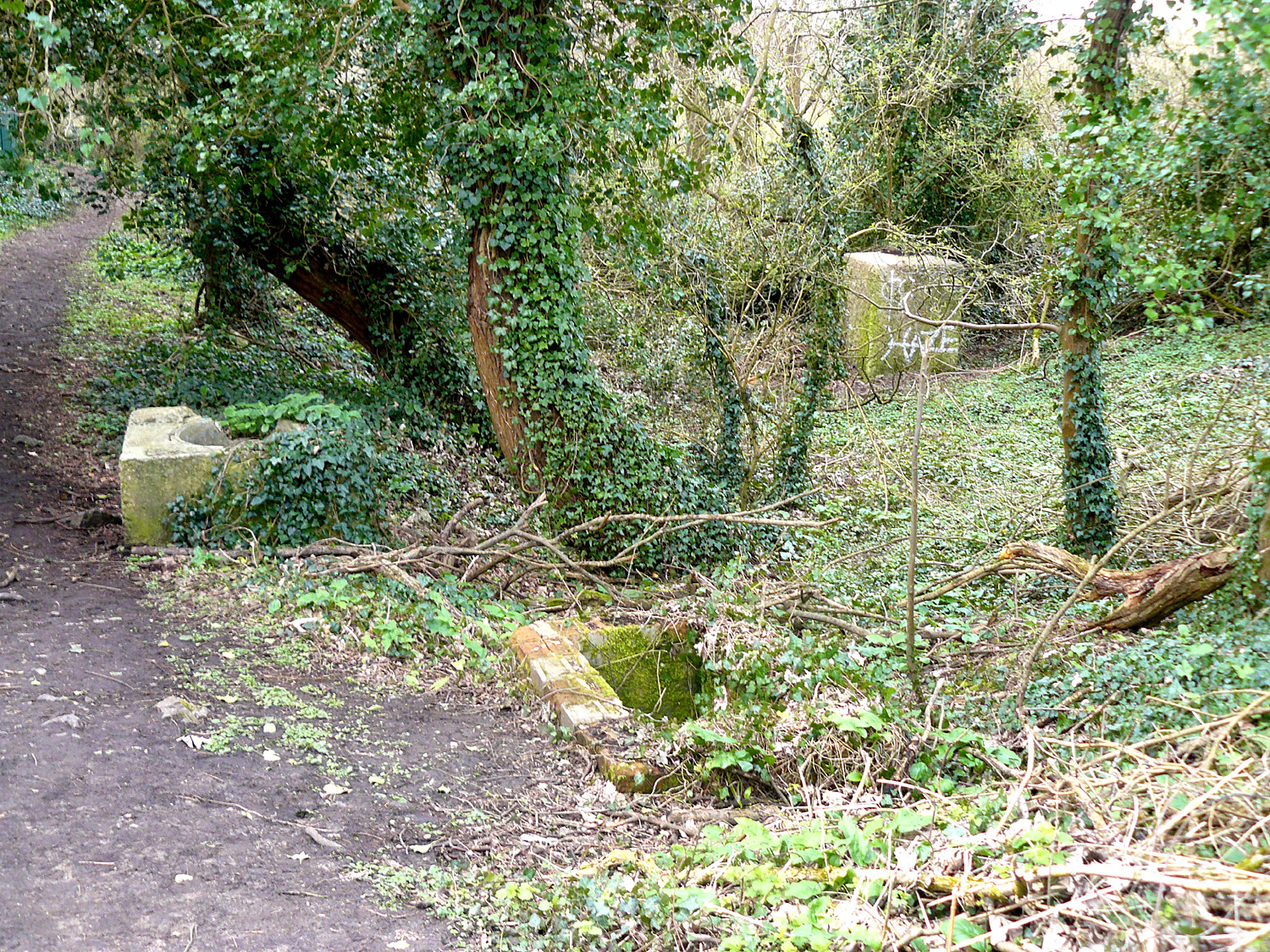The towpath embankment to the east of Bonds Mill is on the edge of a very steep slope down to the River Frome, and there has long been concern about its integrity.


The short length of low level towpath to the east of Bonds Mill Bridge marks the site of a slip in the embankment in 1977 after the canal water level had risen so much that it began to seep over the towpath and saturate the earth. The rise in level had occurred because contractors installing a pipe under the canal near Newtown Roving Bridge failed to provide a means for water flowing along the canal to bypass their works.
Additional earth was brought in to restore the level of the embankment, leaving the original towpath at a lower level.


130 yards north-west of the railway bridge are the remains of a water intake and dam associated with supplying water for the boilers at Hoffmann's nearby ball bearing factory. The factory was set up on the north side of the main road in the early days of the Second World War because there were fears that their main factory at Chelmsford would suffer bomb damage. An underground pipeline was installed in 1942 to carry water to the factory and to return drainage.
Following concern about the integrity of the towpath embankment to the west, a dam with a spillway was constructed west of the pipe intake to isolate that part of the embankment from the water supply arrangements. In 1988, the factory stopped needing water from the canal, and the section of the dam near the towpath was cut through in 2022. The remainder of the dam and its concrete spillway remain in position. For more about the intake and dam, visit Water for Hoffmann's Factory.


Beside the towpath north-west of the railway bridge is a steeply sloping wooded area that for many years was used by the Stroudwater Company for tipping mud dredged from the canal.
On private land close to the railway embankment, there are brick shafts that gave access to a former open ditch that had to be culverted when more earth was added to the embankment following a slip in 1947. Two concrete shafts mark the line of another surface water drain installed c1950 with an outfall into the River Frome.
For the towpath slip in 1977, see D1180 Engineer's correspondence 1978-79.
For Hoffmann's intake and dam, see D1180 Memoirs by Alan F R Payne.
For a plan of the mud tip c1890, see D1180/10/9.
For the extension of the mud tip in 1915, see D1180/1/8 p283.
For the sale of land following the embankment slip in 1947, see D1180/9/18 p449, 504.
For the trespass on the mud tip for the outfall c1950, see D1180/9/19 p363.